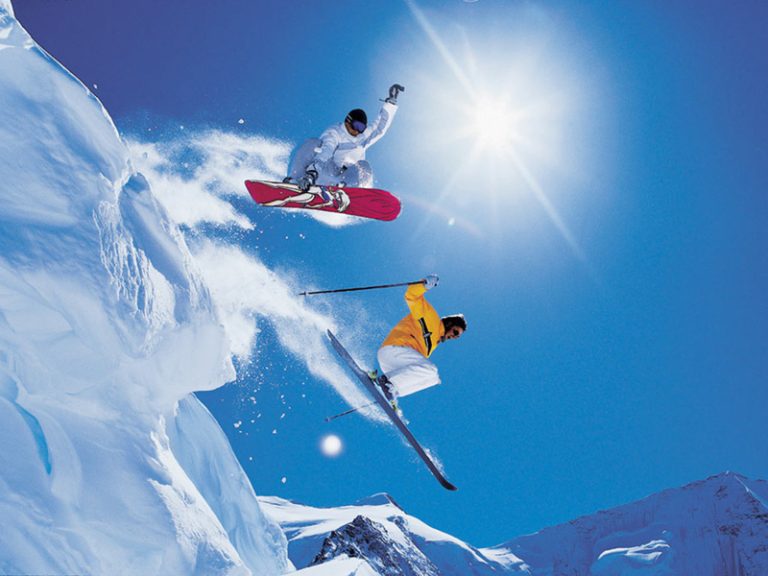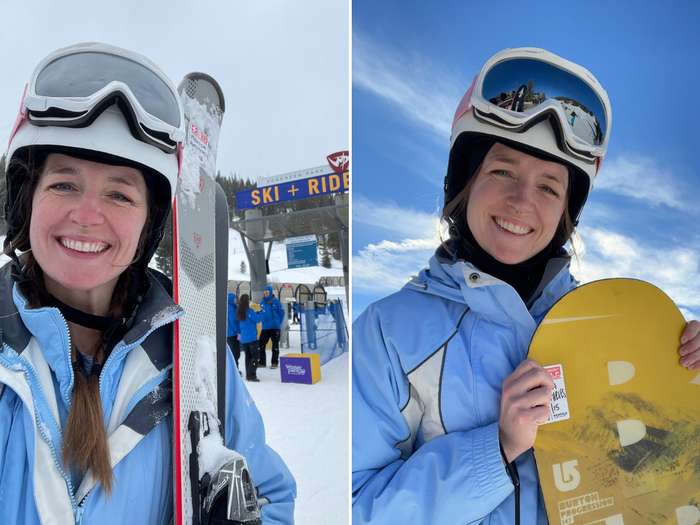Which is Better for Knees Skiing Or Snowboarding?
When it comes to winter sports, skiing and snowboarding are two popular choices. They both offer thrilling experiences on the slopes, but if you’re concerned about your knee health, you may wonder which one is better for your knees. In this article, we will explore the impact these sports have on your knees to help you make an informed decision.

Credit: www.theskigathering.com

Credit: drsterett.com
The Mechanics of Skiing and Snowboarding
Skiing and snowboarding involve different movements and techniques that can affect your knees in various ways.
| Skiing | Snowboarding |
|---|---|
| Straight leg positioning | Bent knee positioning |
| Rotational movements | Linear movements |
| Heels and toes used for balance | Entire foot used for balance |
Impact on Knee Joints
Both skiing and snowboarding put stress on the knee joints, but the specific impacts differ.
Skiing: Skiing involves repetitive twisting and turning motions, which can potentially stress the ligaments and tendons in your knees. The straight leg positioning during skiing places additional pressure on the knee joints, especially during high-speed turns. However, skiing also provides better shock absorption due to the presence of two separate skis, distributing impact forces better than snowboarding.
Snowboarding: Snowboarding, on the other hand, puts more strain on the knee joints due to the bent knee positioning required for stability and maneuverability. The constant flexing and bending can lead to overuse injuries, such as strains and sprains. Snowboarding does, however, offer more natural ankle movement, which can help absorb some of the impact and reduce stress on the knees to some extent.
Risk of Injury
While both skiing and snowboarding carry some risk of knee injury, studies have shown that skiing tends to have a higher incidence of knee ligament injuries, such as anterior cruciate ligament (ACL) tears. The twisting and rotational movements in skiing can put the ligaments at risk, especially during sudden changes in direction or falls. Snowboarding, on the other hand, has a higher risk of ankle and wrist injuries.
Knee Conditioning and Techniques
Regardless of whether you choose skiing or snowboarding, proper conditioning and techniques can help minimize the impact on your knees.
- Strengthen your leg muscles, particularly the quadriceps and hamstrings, to provide better stability and support for your knee joints.
- Focus on flexibility exercises to improve your range of motion, reducing the risk of strains or tears.
- Warm up before hitting the slopes, and take breaks throughout the day to rest and avoid fatigue-induced mistakes.
- Invest in high-quality equipment, such as well-fitted boots and bindings, to ensure proper support and alignment.
- Take lessons to learn and master the correct techniques and body positioning to optimize safety and minimize stress on your knees.
Consult with a Professional
If you have pre-existing knee conditions or concerns, it is advisable to consult with a healthcare professional or a specialist who can assess your individual situation and provide personalized advice. They can help determine which sport would be better suited for your knees based on your specific needs and limitations.
Frequently Asked Questions Of Which Is Better For Knees Skiing Or Snowboarding?
Is Skiing Better For Knees Than Snowboarding?
Skiing and snowboarding can both be knee-friendly with proper technique and conditioning. Regular exercise off-season is important.
How To Prevent Knee Injuries When Skiing Or Snowboarding?
Maintain strong leg muscles, use proper equipment, warm-up, and follow techniques. Listen to your body and don’t overdo it.
Which Is More Suitable For Knees: Skiing Or Snowboarding?
Both skiing and snowboarding can be kind to knees if practiced correctly. Consult with a professional instructor for guidance.
Can Beginners With Knee Issues Safely Ski Or Snowboard?
Beginners with knee issues can still participate by taking lessons, using proper gear, knee braces, and starting on gentle slopes.
Conclusion
Ultimately, the choice between skiing and snowboarding depends on various factors, including your personal preferences, overall fitness level, and any pre-existing knee conditions. Both sports carry some risk of knee injury, but by conditioning your muscles, using proper techniques, and taking precautions, you can reduce the impact on your knees while enjoying your winter adventure on the slopes.



